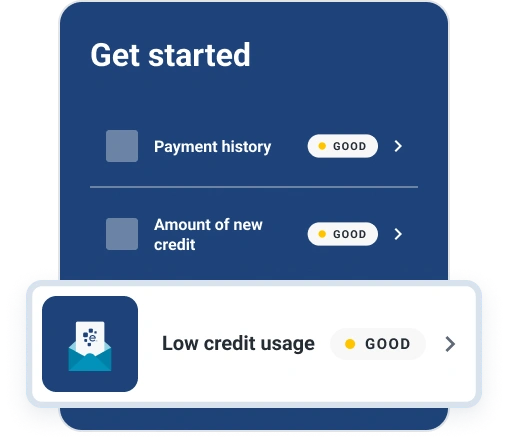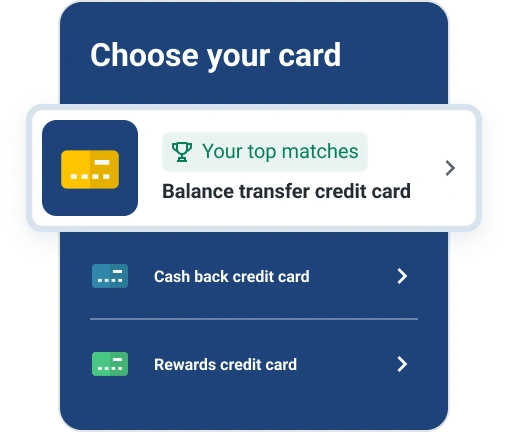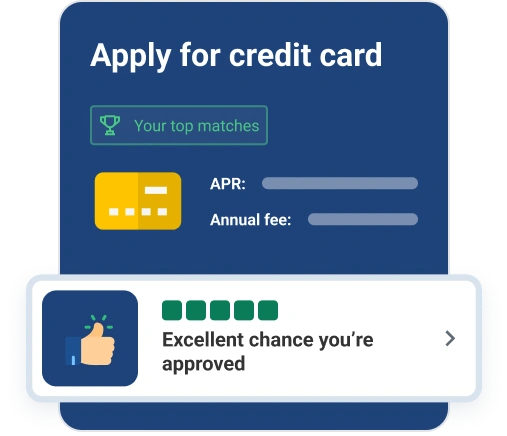At Experian, one of our priorities is consumer credit and finance education. This post may contain links and references to one or more of our partners, but we provide an objective view to help you make the best decisions. For more information, see our Editorial Policy.
In this article:
Interest rates are rising, which means your credit cards are likely to get more expensive. The average credit card debt as of the third quarter of 2022 was $5,910, according to Experian data. That debt comes at a cost when you consider the average annual percentage rate (APR) for revolving credit accounts is 20.92% as of February 2023. That figure is now four percentage points higher than it was in March 2022, before the Federal Reserve raised interest rates numerous times.
Historically, when the Fed raises interest rates, credit card APRs also increase. Let's take a look at how rising interest rates translate to credit card APR increases, how this can affect your debt and what you can do about it.
How Credit Card Interest Works
As you may know, credit card interest is the cost of borrowing money from a lender or creditor. When you don't pay your balance in full, the unpaid amount of your balance carries over to the next billing cycle. The leftover balance is your revolving balance, and it usually accrues interest.
Credit card companies typically show interest as an APR. Unlike most loans—where APRs represent the combined costs of interest rates and fees—APRs and interest rates mean the same when it comes to credit cards.
Credit card companies calculate the interest you'll pay based on your average daily balance during the billing cycle. To calculate your average balance, your card issuer adds interest every day and subtracts payments as you submit them. At the end of your billing cycle, your daily balances are then added together and divided by the number of days in the cycle to determine your average daily balance.
The good news is you can avoid paying interest altogether by paying your full statement balance by the due date. If you can't pay the whole balance in full, try to pay as much as possible. Keeping your balances low and reducing your debt will be crucial to limiting the sting of rising interest rates.
How Do Fed Rate Increases Affect Your Credit Card APR?
When the Fed raises interest rates, they increase what's known as the federal funds rate. That's the rate at which banks lend money to one another. The Fed raises or lowers the federal funds rate based on current economic conditions.
Banks and other financial institutions then use the federal funds rate as a foundation to set their own prime rate—the rate they make available to the most qualified loan and credit card borrowers. Generally, when the federal funds rate rises or falls, the prime rate follows suit.
Fluctuating rates shouldn't impact fixed-rate installment loans because the rate is locked in when you take out the loan. However, many revolving credit products, including nearly all credit cards, have a variable rate that's well above the prime rate.
"Typically what credit card companies do is take the Fed's rate and then add an additional interest amount," says Bill Hardekopf, senior industry analyst at Money Crashers. "It might be that the Federal Reserve rate is the foundation, and then they might take it up, say, 6.99% to 12.99%. That extra 6.99% is if you have excellent credit, and the 12.99% might be if you have good or fair credit."
If the Federal Reserve raises their rate by half a percentage point, for instance, it will likely result in a half percentage point, or 0.50%, bump in your credit card interest rate. So if your APR is currently 16%, your rate may jump to 16.50%. When the Fed raises interest rates, credit card issuers typically pass along the higher interest rates to cardholders within one or two statement cycles.
Steps You Can Take When Your Interest Rate Increases
With ascending APRs on the horizon, your credit cards will likely be more expensive. If you carry high balances, or your budget is already pretty tight, you might want to rethink how you use your credit cards. You might consider safeguarding your finances using the following strategies.
Pay Down Your Credit Card Debt
The most important step you can take is to pay down your credit card debt or pay it off altogether. Lowering your revolving debt may help you limit your exposure to interest rate hikes in the future.
There are two popular strategies for reducing your credit card debt: debt avalanche and debt snowball.
- Debt avalanche strategy: The debt avalanche strategy helps you save money by focusing on paying off your most expensive debts first. Each month, you'll make minimum payments on all your credit cards and apply any extra payments you can make toward your card with the highest APR.
Once you eliminate the debt on that credit card, take the money you were paying toward it and apply it toward the credit card with the next-highest interest rate. You'll continue this process until you have no more credit card debt, and you'll have saved the most money by paying off higher APR debt first.
- Debt snowball strategy: By contrast, the debt snowball strategy focuses on getting quick wins by wiping out the credit card with the lowest balance first. When you pay off your smallest balance, you'll take the money you used to make that card's payment and apply it to the card with the next-lowest balance. Repeat this process, and the money you apply towards your payment will grow like a rolling snowball. Getting early victories may help build momentum and confidence that can help you stay motivated to eliminate your credit card debt.
Consider using the debt avalanche strategy if you strictly want to save the most money. But if you think you'd benefit from the psychological boost of quick wins, the debt snowball may be a better option.
Consider a Balance Transfer Credit Card
If you're carrying a lot of debt, you may be able to insulate yourself from rate hikes for a limited time with a balance transfer card that has an introductory 0% APR. Some introductory credit card rates last as long as 21 months. Since you won't pay any interest charges during this promotional period, you can accelerate your debt reduction efforts without interest charges holding you back. Keep in mind, you may have to pay a balance transfer fee, which is typically 3% or 5% of the amount you transfer.
Save with an intro 0% APR balance transfer
Get a Debt Consolidation Loan
You might consider getting a personal loan to consolidate your credit card debt if you have good credit. A debt consolidation loan is an installment loan, usually with fixed interest rates and a fixed monthly payment amount. As soon as you take out your loan, you'll have a set repayment schedule with a specific end date when your loan balance will be $0.
The average interest rate on 24-month personal loans is 11.48%, according to the Federal Reserve. If you have good credit, you may be able to qualify for a rate that's much lower than your current credit card APRs. By transferring your credit card debts to a single debt consolidation loan with fixed rates and one monthly payment, you could simplify your repayment process and protect your debt from potentially rising interest rates. When it comes to debt consolidation loans, sooner may be better since these rates will also increase.
Negotiate a Lower Interest Rate
Another important step you can take is to contact your card issuer and negotiate a lower APR. There's no guarantee your request will be granted, but your credit card company may agree to a lower rate if you have a good credit score and a consistent record of making payments on time.
Monitor Your Credit
When interest rates rise, exercising responsible credit card use makes even more sense. It's also wise to stay on top of your credit, especially since rising rates could increase your credit utilization ratio. That's the amount of debt you owe compared with your total available credit. Bear in mind, your credit utilization is a very important factor in your FICO® Score☉ , the score used by 90% of top lenders.
Experian's free credit monitoring will help you keep an eye on your credit. You'll receive alerts when your credit utilization changes. You'll also be informed of any changes to your credit report every day.




